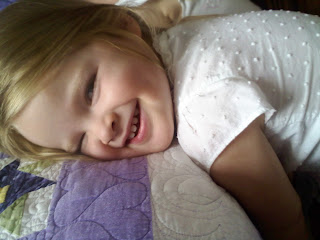This is how I would describe my children. They are born from the same mother and father and presumably splash in the same gene pools, but their personalities could not be further from each other. Somehow still, we all meld together to create a nearly smooth family soup with only some small wandering lumps and clumps.
A couple of months back I was at a talk given by a woman who was using the book “Different Children, Different Needs” by Dr. Charles Boyd as the basis of her discussion. That night’s talk was one of those I walked away from a little different than when I had come in. In this book it defines, on an xy axis, the four different personality directions. Imagine if you will, the Vertical axis being task oriented on top and people oriented on the bottom and the horizontal axis having slow paced on the right and fast paced on the left. Now most people fall somewhere on the spectrum (sometimes a blend or a little more of something and a little less of something else), but I found, after listening to all the traits, that each of my children fell in the furthest points of every quadrant… making a perfect square when they were connected.
The upper left quadrant would be the “D” Determined child, which is my youngest, Journey. This is ironic because this spot is typically held by first borns, but if any of you know Journey you know she thinks and acts like a first born.
The lower left area is for the “I” Influencing child. The characteristics of this scream Lana’s name.
The upper right is for the “S” Soft-hearted child and Skyla, our oldest, fills this roll.
Then there is the lower right that is for our Trinity and it is for the “C” contentious child.
It was seriously like someone took my children away for 6 months, studied their habits, nuances, gifts and burdens and wrote a book about the four of them.
The speaker went on to explain the parenting strategies for nurturing and guiding these four unique personality paths. It was eye opening to say the least and gave me a lot to think about. Many times we think what is good for one child is good for all of them. However, the way one reacts to something you do, or say, will be completely different than the way another child reacts. Also, from their end, how they deal with stress, relaxation, work and criticism is all different even if their environment is the same.
The book goes on to say the strengths, limitations, fears and needs of each type of child and also explains their communication styles, how they work under pressure and their common decision making techniques. Again… these categories could have been named after my children because they were so point on to what I see everyday with them. I was also told what each child needs to recharge and relax. Skyla needs “nothing” time, which is so true for her. She needs some quiet nothing to rest that mind that is usually going fast and faster. Trinity needs some private time and Lana, our social butterfly, needs social time. I learned about Journey’s power struggles and that she needs choices and direct answers from me.
“Weaknesses are strengths pushed to an extreme”. This was a phrase she used and then went on to show how each group has their strengths, but when pushed and stressed, those same strengths turn into a downfall for that child. This can all be applied to adults just as much as children.
This is an awesome book and highly recommended if you would like to learn more about where your kids might be coming from. This is not intended to stick your child in a box with a pretty label saying “this is who you are and it’s not changing”; because we all know people change. But, if you want to stop pulling your hair out because child B isn’t responding the same way to something that worked with ease with child A then this is something you might want to check out. Limit your chaos by getting to know your children as much as you can. Learning to optimally work with your child through the praise and the discipline will lower the stress in your home.
Free them to be who they are designed to be and it will be a huge freedom for you as well. We are here to help our children use their strengths and learn from their weaknesses and how can we do that when we don’t know exactly what they are. Invest some time in studying how your child works and you might both be surprised at the outcome.







1 comment:
This sounds like a great book. I am always impressed at how you know every nuance of all 4 of them, and try so hard to parent right to each of their needs. I get so tired with just 2, and I feel like I often give up and yell, "What's good for the goose is good for the gander!". Thanks for writing! It's a calming inspiration!
Post a Comment